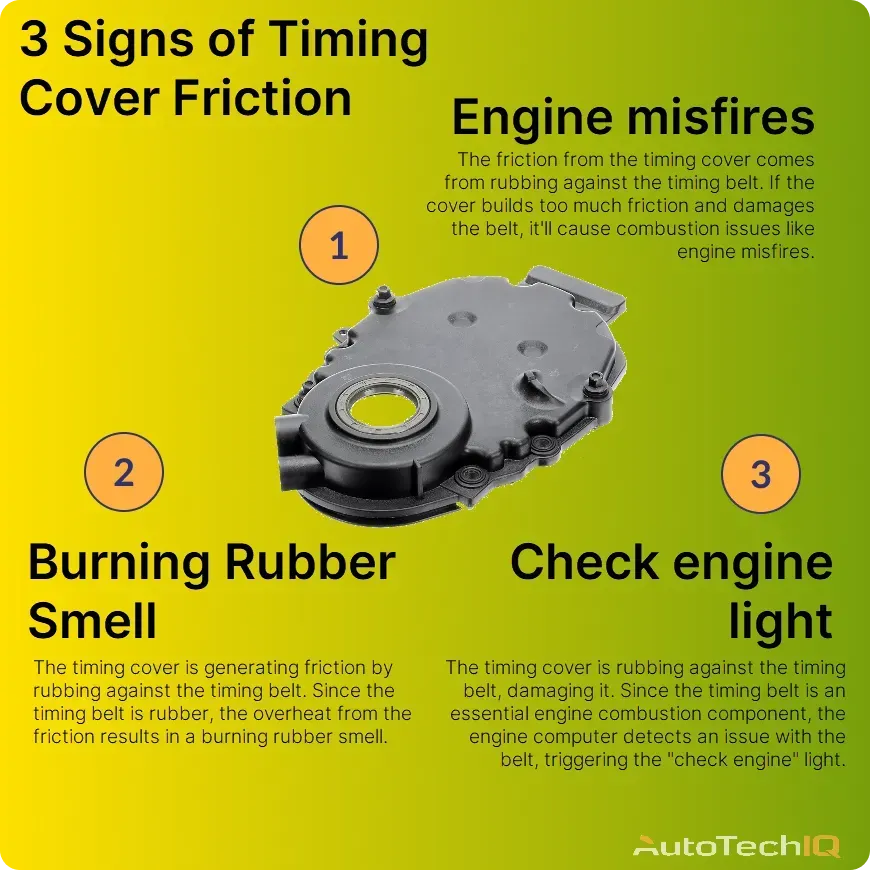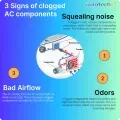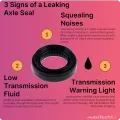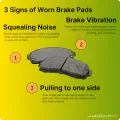

The timing cover is a component that works adjacent to the engine, acting as a protective housing. The timing cover protects the timing belt, a sort of chain that rotates with gears and synchronizes engine components to run the combustion process. The timing belt is made of rubber.
The timing belt cover is typically made of metal or plastic and works close to extreme temperatures. Over time, the timing cover can bend, stretching out of place.
Since the timing cover is pretty close to the timing belt, the bent timing cover might rub against the belt. As the vehicle drives, the belt moves, rubbing harder against the bent timing cover, generating more friction and burning. As a result, a burning rubber smell, resulting from the timing belt, starts appearing.
- Safety: The timing cover can cause too much friction on the timing belt and cause it to fail. A faulty timing belt won't play its role in engine combustion. Therefore, the engine can overheat and misfire, and the vehicle might stall unexpectedly.

Burning rubber smell
One of the main signs of friction in the timing cover is a burning rubber smell. Typically, the timing cover gets bent due to aging or impact and stretches out enough to touch the timing belt.
Since the timing cover is the protective cover of the timing belt, they're extremely close. Therefore, it's pretty common to have the cover rub against the belt due to an issue.
The belt is rubber, so the friction from the cover touching the belt generates too much heat and results in a burning rubber smell.
Check engine light
The timing cover protects the timing belt. If the timing cover gets bent and damages the timing belt, it'll cause engine problems.
The timing belt is essential to control engine combustion; it synchronizes the rotation of the engine's crankshaft and camshaft(s), ensuring that the engine's valves open and close correctly during each cylinder's intake and exhaust strokes.
Therefore, a timing belt issue results in improper engine combustion, which is enough for the vehicle's computer to detect and trigger a dashboard "check engine" warning.
Other signs
- Engine oil leak
- Engine overheating
- Engine misfires
- Engine temperature light
- Squealing noise
Possible fixes
- Timing belt replacement: A faulty timing cover rubbing against the timing belt will cause extra wear and damage to the belt. Consequently, you might also need to replace the timing belt when replacing the timing cover.
- Timing Belt Tensioner Replacement: If the timing cover starts damaging the timing belt, it may also damage the belt tensioner. There's a possibility you'll need to replace the tensioner.
- Timing Belt Idler Replacement: If the timing cover rubs against the timing belt and damages it, it'll risk other components like the belt idler. Therefore, you may need to replace the idler if it gets damaged.
- Spark Plugs Replacement: The timing cover might damage the timing belt, making it faulty and not capable of helping the engine's combustion process. A faulty timing belt won't make the combustion run as it should, risking engine misfires and overheating that can affect spark plugs and balance shafts in a gasoline engine.
- Engine replacement: If the timing cover damages the timing belt, the combustion process won't have the proper valve and piston movement, which depends on the belt. Therefore, the engine might overheat and develop misfire issues that can progress into severe wear, resulting in needing an engine block replacement. If a leak happens, the engine might also show low oil pressure and loss of synthetic oils.
- Timing cover replacement: The timing cover itself might need replacement if it's damaging the timing belt and suffering friction force. In this case, the cover might be bent, melted, or fractured due to impact, wear, etc.
Frequently Asked Questions
Can I drive with a bad timing cover?
No, it's not recommended to drive with a bad timing cover. Even a minor crack or leak can expose the timing belt to debris or cause oil leaks. A damaged engine timing chain can lead to engine failure, faulty water pump, bad fuel economy, and chain system failure, which is more expensive. If you must keep driving with a bad timing cover, verify that it is not rubbing against the timing belt, and if it is, apply friction modifiers to reduce damage. Play it safe and get the timing cover addressed before driving your car.
How do I stop my timing cover from leaking?
Fixing a timing cover leak usually involves replacing the gasket. This is a complex job that requires accessing the engine internals and might be best left to a mechanic. For a temporary fix, some attempt to use leak-stop additives, but these are not guaranteed and could cause further issues. If you're handy with cars, you can find online guides on replacing the gasket yourself, but proceed with caution and always check the oil viscosity as improper installation can worsen the leak.
How long does a timing cover last?
The timing cover itself is built to endure the lifespan of the engine, which can range anywhere from 100,000 to 300,000 miles in normal operating temperature, depending on various factors like car maintenance and driving conditions. However, its effectiveness relies on a good gasket, which can wear out over time and cause leaks. These leaks need to be addressed to prevent engine damage.
Other news
-
Car is Squealing When Driving

-
What is Preventative Maintenance and What Are The Benefits of it?

-
JobViewIQ - DVI Process Training - Part of the Auto Care Alliance Benefits

-
7 Signs of Clogged AC Components

-
How Much Does a Transmission Fluid Change Cost?

-
7 Signs of a Leaking Axle Seal

-
8 Signs of a Bad Brake Pad
